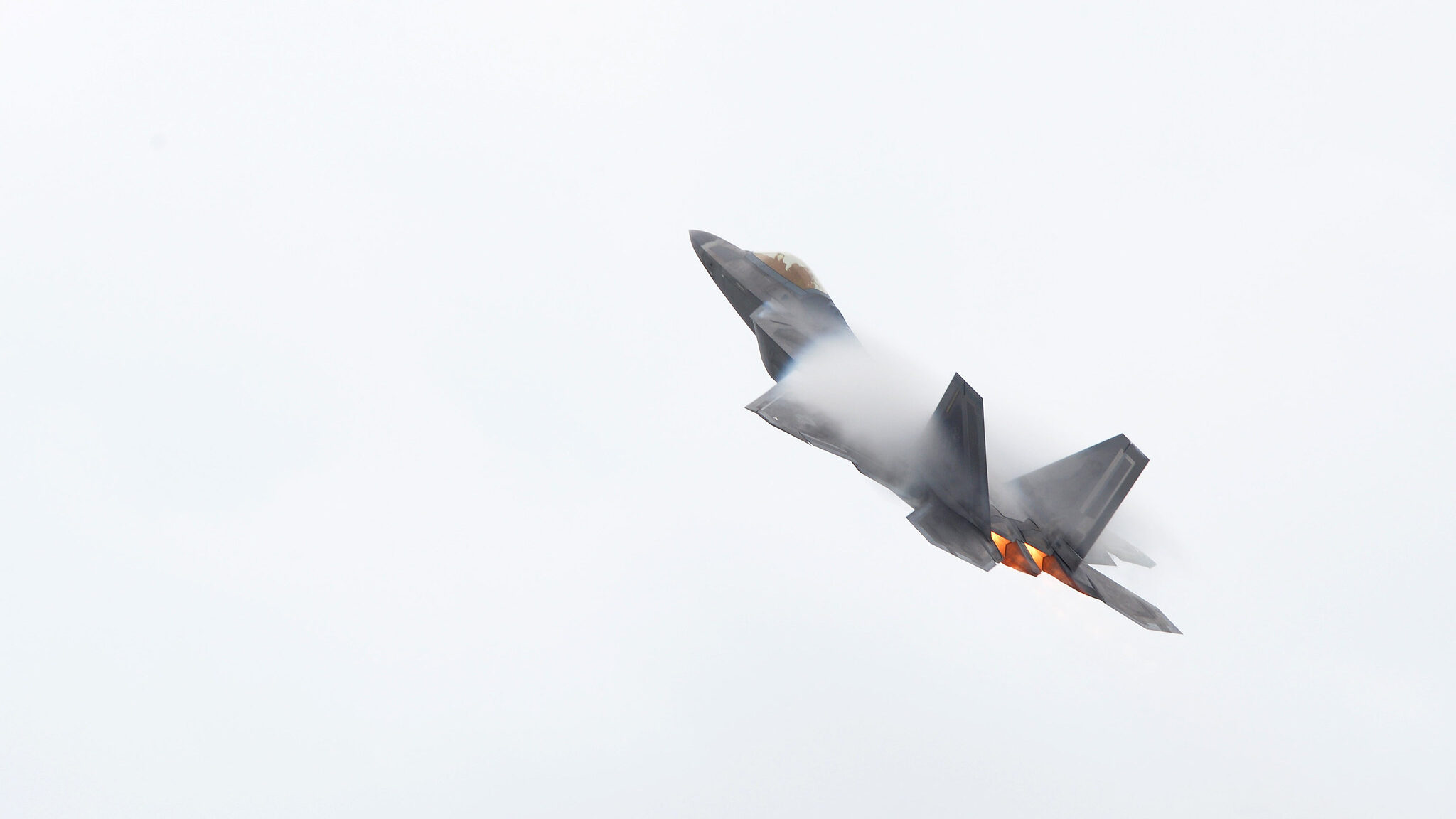
An F-22 Raptor takes off for a training mission at Joint Base Pearl Harbor-Hickam, Hawaii. (U.S. Air Force photo by Staff Sgt. Alexander Martinez/Released)
WASHINGTON — Much attention has been paid to the Air Force’s plans to junk an older group of F-22 Raptor jets, but newer, more combat-capable versions of the stealth fighter are the service’s “highest priority” for a near-term fight, according to a senior official.
Speaking at the McAleese Defense Programs conference today, Air Force acquisition boss Andrew Hunter called the F-22 the “foundation” of the service’s airpower amid a larger effort to “reoptimize” for competition with China, noting that the jet will serve a vital role until its successor, the Next Generation Air Dominance (NGAD) platform, comes online.
“F-22 is a critical capability,” Hunter said. “So what’s my highest priority in the near term for that great power competition? I’d probably put F-22 at the top.”
In its fiscal 2024 budget request, the Air Force moved to junk 32 older F-22s in a configuration known as Block 20, arguing that money to modernize those jets would be better spent on NGAD. But Congress blocked that move, forcing the service to continue their upkeep. Hunter’s comments today are likely a preview of what the service will ask for regarding the Raptor in its upcoming FY25 budget request.
Hunter said that Air Force officials will engage Congress on “some” F-22s that aren’t prepared for combat, and appeared to suggest that funding could be used instead to modernize other Raptors in the fleet. Air Force officials have previously said that funds freed up by divesting Block 20 fighters would be spent directly on NGAD.
Speaking later in the day, Air Force Chief of Staff Gen. David Allvin explained that the service is currently focused on keeping certain F-22s “viable and relevant against the threat until Next Generation Air Dominance” arrives. Echoing Hunter, he then said “we’re looking to be able to take those that are the most combat-capable, keep them in the fight, and then leverage some of the resources for those that are going to be cost prohibitive and time prohibitive” to upgrade.
In 2021, the Air Force awarded Lockheed a nearly $11 billion, decade-long contract to modernize the fighter.
CCA Maturity
Another key priority for the Air Force is fielding its planned fleet of drone wingmen, the Collaborative Combat Aircraft (CCA), which the service expects to field by FY28.
As Breaking Defense first reported, five companies — Boeing, General Atomics Aeronautical Systems (GA-ASI), Lockheed Martin, Northrop Grumman and startup Anduril — have been selected by the Air Force for the first round of CCA work. A down select is expected within months that could narrow that pool down to two or three vendors.
Fielding questions from reporters after his remarks, Hunter said that group of five vendors already had mature systems on hand, pointing to examples like GA-ASI’s Gambit drone family that is currently on contract for the Air Force’s Off-Board Sensing Station program. Without existing government partnerships or requisite internal investment, those companies likely wouldn’t have been in a position to compete for the first “increment” of CCA, he said.
The second increment of the CCA program will facilitate a “broader pool of competitors,” Hunter noted, and “will still be in a very early concept development stage” when a competition for the increment kicks off in the 2025 fiscal year.
Contracting Tensions With Industry
Underpinning all of the Air Force’s acquisitions is contracting, which has become a significant friction point with industry amid vendor complaints due to losses on fixed-price deals.
Expanding on previous comments doubling down on using fixed-price approaches, Hunter said tension tends to arise around exactly when fixed-price models will be employed for contracts. The Pentagon typically uses a cost-plus model for development and transitions to fixed-price deals once production of a weapon system begins, though even that approach can result in huge losses for contractors on programs like the B-21 stealth bomber, built by Northrop Grumman.
“What I’m looking for when I talk about fixed price early in production, which I think is where our true argument really lies, is how early in the production process is fixed-price the right approach,” he said. “What I’m looking for is realism from industry,” he continued. “When you do you feel confident enough in your cost estimate and your pricing that you’re willing to take [a contract] as fixed-price versus a cost plus?”
The Air Force additionally “does not have a policy” of pursuing fixed-price development, he said, but rather seeks to contract using “appropriate levels of risk” in development. Fixed-price development contracts in particular have come under fire from industry, with Boeing swearing them off completely due to billions of dollars in losses on programs like the KC-46A tanker.
One cost-plus contract the Air Force has had a “hard time” reaching an agreement on, Secretary Frank Kendall recently said, is the E-7A Wedgetail, made by Boeing. Hunter told reporters today that the service is “working with [Boeing] to get to an affordable price” and that the two parties have “significantly narrowed” differences, but “we’re not there yet.”
Still, he said, officials “see E-7A as a capability that makes sense and that we need to field in the near term.”






















